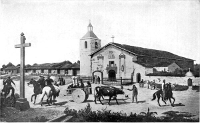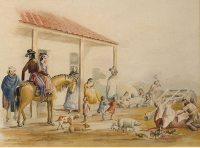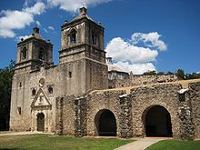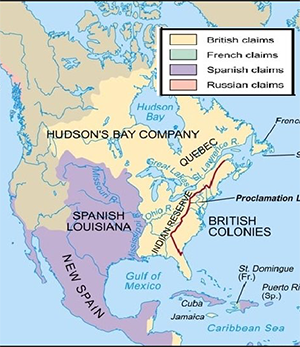Spain in the New World
Part 5: Struggle for North America

Starting in 1769, Catholic missionaries from Spain built 21 missions up and down California, from Mission Basilica San Diego de Alcala in what is now San Diego to Mission San Francisco de Solano in what is now Sonoma, a distance of 650 miles. The missions are about 30 miles apart, a distance that was thought to have represented one day's journey for a person on horseback. Father Junipero Serra founded the first of those missions in 1769 at San Diego, also the site of the first permanent European settlement on the Pacific Coast, the Presidio at San Diego. Spanish officials envisioned a highly structured system of governance for Alta California. They had built the missions with the idea of spreading Christianity throughout the new land, and missionaries aimed to convert Native Americans to the Christian faith while also teaching them trades like brickmaking and blacksmithing. At a higher level, Spain divided Alta California into four military districts, with each one having a presidio acting as a controlling interest. Spain built the other three presidios at Monterey, San Francisco, and Santa Barbara. 
Commanding later Spanish expeditions were Gaspar de Portola and Juan Bautista de Anza. Spanish settlers also founded towns, many of them. What is now the largest city in the State of California, Los Angeles, was established in 1781; San Jose, in the north, had come along four years earlier. 
The Spanish built missions in what is now Texas throughout the 18th Century, including the Mission San Antonio de Valero in 1718. Also set up during this time were the towns of Goliad, Nacogdoches, and San Antonio. Spanish settlement increased throughout the area, and conflicts between Spanish and Native Americans were not uncommon. Parts of northern Texas were included in the Louisiana Territory, which was owned by France originally, then went to Spain in 1762, then went back to France in 1803, then ended up with the United States as part of the Louisiana Purchase. The United States at this time insisted that the Louisiana Territory included all of Texas; Spain disagreed. The 1819 Adams-Onís Treaty sorted this out, with the U.S. renouncing all claims to Spain in exchange for Spain's agreeing to the American takeover of Florida. When the 13 Colonies of the United States revolted against Great Britain, Spain waited a few years and then threw in their lot with the Americans, fighting British troops in the Gulf Coast area in 1779–1781. The 1783 Treaty of Paris, ending the American Revolutionary War, gave Florida back to Spain. Silver was a primary export from New Spain, from mining centers like Hidalgo and Zacatecas. As monarch after monarch struggled to finance various war efforts through taxes and other internal revenue-raising means, silver poured in to Crown coffers from the New World. Working in those mines were mainly forced laborers. The slave trade supplied a significant portion of this labor. Next page > Liberation in the South > Page 1, 2, 3, 4, 5, 6, 7 |
|
Social Studies for Kids
copyright 2002–2025
David White



 In between that time, Spain, England, France, and other European powers fought the
In between that time, Spain, England, France, and other European powers fought the 
